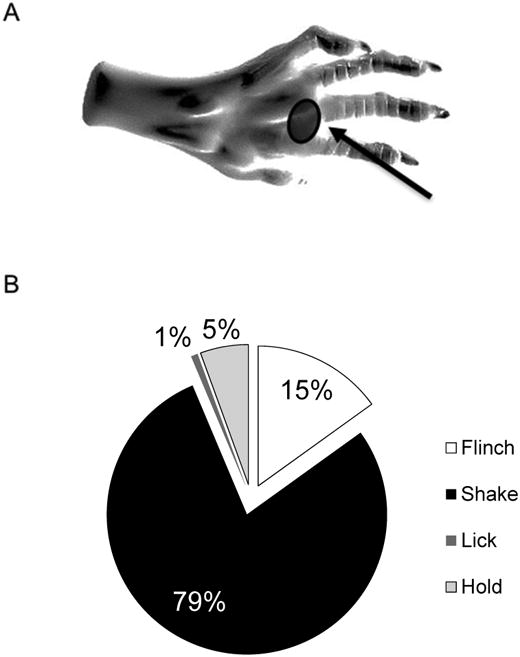Figure 1.

Shake behavior best represents mechanical pain in the mouse. (A) Graphic illustration of a mouse hind paw showing the area stimulated (shaded area) by von Frey filaments (VFF) in pain testing (digital illustration of the rat paw: http://toxic929.deviantart.com/art/Rat-Paw-Sketch-213935890). (B) Pie chart showing relative occurrence (%) of four subcategorized paw withdrawal behaviors (flinch, shake, lick, and hold)in response to VFF stimulation in the spinal nerve ligation (SNL) mouse model of neuropathic pain. Unlike quick reflex-like flinch behavior, shake behavior, the most prevalent withdrawal response type, was often occurred with lick and hold behaviors, and thus was chosen to represent neuropathic mechanical pain in this study. The relative occurrences were calculated from total 74 withdrawal responses in 9 mice.
